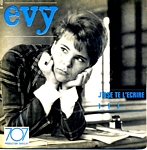
The church seems to have rapidly became less tolerant of trans* people and their marriages after her first divorce, however - you can read more here.ĭufresnoy would later divorce Bonnet and marry twice more. The only religious/legal requirement was that she officially change her name and be re-baptised as Jacqueline – in the midst of today’s debates about religious intolerance and queer/trans*/same-sex marriage, this seems quite incredible to me. What seems particularly amazing to me is that this apparently happened legitimately in the French church – and that she was given away by her father. She also commented that "It meant I could no longer be arrested by the vice squad for impersonating a man”.ĭufresnoy appeared in her first film, Europa di notte, in 1959, and was a hit – shortly afterwards, the Italian singer Ghigo Agosti dedicated a song, 'Coccinella’, to her. In 1960, she was married to journalist François Bonnet. After the operation, the doctor just said, "Bonjour, Mademoiselle”, and I knew it had been a success.“ “Dr Burou rectified the mistake nature had made and I became a real woman, on the inside as well as the outside. Here is what she herself had to say about the experience: She began taking hormones at around this period, and in 1958 she travelled to Casablanca for reassignment surgery. In 1953, aged 21-22, she began performing as a showgirl at Chez Madame Arthur and the Carrousel, two famous drag-themed nightclubs (both of which apparently still exist). She was nicknamed 'Coccinelle’, 'Ladybird’ (or 'Ladybug’ to US readers!), because of a particular favourite red-spotted dress. She was raised by a relatively sympathetic family – there’s an account of her dyeing her hair blonde as soon as she was old enough to do so, and she began dressing in femme-coded clothes at a very young age. She also founded the Association Devenir Femme, a support and advocacy group for French trans* women, and toured the world entertaining people and raising awareness.ĭufresnoy was born in 1931 and assigned male at birth. Jacqueline Charlotte Dufresnoy, 'Coccinelle’ to her friends and adoring audiences, managed to rack up a lot of 'firsts’ in her lifetime – she was, as far as we know, the first French person to have sex reassignment surgery, one of the first trans* film actresses, and the first openly trans* person to be married in the Catholic Church. Jacqueline Charlotte Dufresnoy, ‘Coccinelle'

“After the operation, the doctor just said, ‘Bonjour, Mademoiselle’, and I knew it had been a success.”Īfter returning home from her surgery, Coccinelle became a media sensation with a look and stage act based on the prominent sex symbols of the day.24. “Dr Burou rectified the mistake nature had made and I became a real woman, on the inside as well as the outside,” Coccinelle said at the time. In 1958, she travelled to Casablanca to undergo a vaginoplasty by Dr Georges Burou. After that, she earned a role at Le Carrousel de Paris, a popular music hall with many transgender performers, where her talent and stage presence captivated audiences. In 1953, Coccinelle made her stage debut at Madame Arthur, a cabaret venue in Paris, performing a song from the film Premier rendez-vous. Designated male at birth, Coccinelle grew up with a deep, inner sense of being a woman, and wished to pursue her interests in fashion and performance.ĭuring her teenage years, after wearing a red dress with black polka dots to a party, the famous entertainer earned the nickname Coccinelle, which translates to ladybug in English.


 0 kommentar(er)
0 kommentar(er)
